Apple relaunches Project Titan, with an aim to build a real car
Project Titan was first downsized, and then it fell into oblivion – it seemed that the program was too ambitious to really take shape. However, that doesn’t seem to be true anymore – a favourable astral alignment has brought it back to life!
Apple relaunches Project Titan, and this time the idea is not to produce autonomous driving software but to return to the original intention, i.e. to build a real car.
The first rule of the Apple Club: ‘Don’t talk about Apple,’ writes Mark Gurman – an authoritative voice at Bloomberg – who seems to have his nose to the ground about everything concerning the giant from Cupertino. He chose these words to explain why – contrary to the expectations of many international observers – that the negotiations between Apple and the Hyundai-Kia group (aimed at giving a concrete form to the Apple Car) failed. The reason is simple – just as in Fight Club, a 1999 film by David Fincher, the essential requirement for anyone who enters the highly confidential club of Apple’s suppliers is that of silence. And the penalty? Well, it’s simple too – expulsion.
Full Size
Now, the recent debacle of the potential American-Korean axis (Hyundai had confirmed the ongoing communication) happened after months of warnings, followed, in turn, by years of silence on Project Titan, which was supposed to have landed Tim Cook’s battleship smack in the middle of the automotive industry.
The project was first downsized, and then it fell into oblivion – it seemed that the program was too ambitious to really take shape. However, that doesn’t seem to be true anymore – a favourable astral alignment has brought it back to life. And not, mind you, in its reduced form, which would have led Apple to develop only autonomous driving software to sell to third parties, but in a far more ambitious form, with the intent of developing a real car.
We can already hear Apple fans rubbing their hands in anticipation and excitement. Now, although Apple’s expertise in operating systems makes it a tech company no more and no less than, say, Microsoft or Oracle, it is above all a consumer-oriented company or, to borrow an expression from the world of marketing, a ‘love brand’. It’s precisely the unwavering support of its loyal customers that’s the key to the success of its products, which are sold at prices far higher than those of its competitors.
What we must understand is that by limiting itself to the simple role of a supplier of software for autonomous driving, Apple wouldn’t have had direct access to all this and would’ve ended up giving up a decisive part of what it profits over. So, as soon as it had the chance, it restored Project Titan to its original form.
Escaping Hell
Now, let’s go back to where we started – the rumoured rift with Hyundai-Kia. The leaking of news about the negotiations between Apple and Hyundai not only confirmed that the former’s automotive project was alive and well but also highlighted another key point – Tim Cook had no intention of getting into the industrial hell in which Elon Musk risked his neck by starting mass production of the Tesla Model 3. Building cars is a business fraught with obstacles and stingy with satisfaction. So, why not outsource it?
The Taiwanese Track
Outsourcing the production of its car makes perfect sense for Apple, whose own production of phones, along with a good part of the iPad and Mac, has for years been entrusted to a colossal Taiwanese contractor – Foxconn.
Well, it just so happens that Foxconn, following the failed Korean connection, has now become one of the most credible potential partners for Apple’s automotive ambitions. So, let’s see what Foxconn is all about. It has an industrial partnership of more than a decade with Apple and a production network of more than 1 million employees. Also, last October, Foxconn presented a modular electric platform, complete with dedicated software architecture, similar in concept and technology to Volkswagen’s MEB.
As proof of its ambitions, Foxconn formed a 50-50 joint venture with Geely – a China-based automotive company – in January 2020 to supply automotive production for third parties and consulting services related to electric cars. More than a decade old relationship (and therefore awareness of the importance of Apple’s industrial secrets), production capacity, expertise, and ad-hoc corporate structure – the ingredients are all there. So, it should come as no surprise that the supplier in pole position for Apple’s automotive ambitions is one that until yesterday made iPhones and PlayStations (yes, Foxconn makes even those).
A Canadian Plan B
Foxconn, however, is not the only company that can claim to have some form of a relationship with Apple. When they decided in Cupertino in 2014 to explore the possibility of stepping into the car business, it was deemed wise to knock on the doors of those who had been in the business for a while. One such company was Magna – a Canadian automotive supplier. In fact, it was the first to be approached for Project Titan, but then it disappeared from the radar after Apple decided to restrict itself to the ‘software only’ hypothesis.
Well, today it has regained importance because the company has taken certain steps that certainly play in its favour. On the one hand, Magna has founded a joint venture with LG to manufacture powertrains for electric cars, and, on the other hand, it has expanded its production capacity in China by focusing on manufacturing zero-emission models. Now, given these developments, it seems almost impossible to think of a better automotive partner for Apple than Magna. Yes, there was some speculation recently in the press, but this was either promptly denied (Nissan) or was too weak to offer a truly credible alternative (Renault and Stellantis).
Drawing a Profile
As you may have guessed, the Apple Car is a book yet to be written, and its publication is still a long way from materialising. How long? Well, there are those who swear that the project will be ready by as early as 2024, which seems rather unjustifiably optimistic, considering the time it would take for Level 4 autonomous cars to become a reality. And then there are those who bet on a more dilated time frame and claim 2027. The truth, perhaps, lies somewhere in the middle, as it often happens. So, let’s say that around the middle of the decade, we should see the first concrete fruits of Project Titan.
Now, on the basis of available information, it’s not unjustified to link the project to a technologically interesting choice in terms of battery chemistry. Let me explain. Many sources claim that the Apple Car’s battery will have a lithium-iron-phosphate cathode (LiFePo) instead of the classic Li-ion nickel-cobalt-manganese cathode. An interesting solution indeed! Apple seems to have opted for something that would not only keep the cost of the project low but also have other advantages, such as greater resistanceto overheating.
On the road to LiFePo, however, Apple would be anything but alone. Even the Volkswagen Group has decided to rely on this technology to develop an heir to the small VW Up – the Skoda Citigo and Seat Mii. And like the Germans, others, too, have exhibited great faith in this chemical alternative – the list includes both Chinese BYD and Tesla, which has already begun to equip its vehicles for the Chinese market with these types of cells and is most likely to use them for the nascent Model 2 – a compact and more accessible car than the Model 3.
Last but not least, there is Renault, which could also use LiFePo for the production version of the electric remake of the 5.
So, when will there be another update on the Apple Car? Well, it’s hard to say, for the message to the (few) moles in the industry has become clearer now. What message, you ask? Well, that the first rule of the Apple Club is: Don’t talk about Apple.
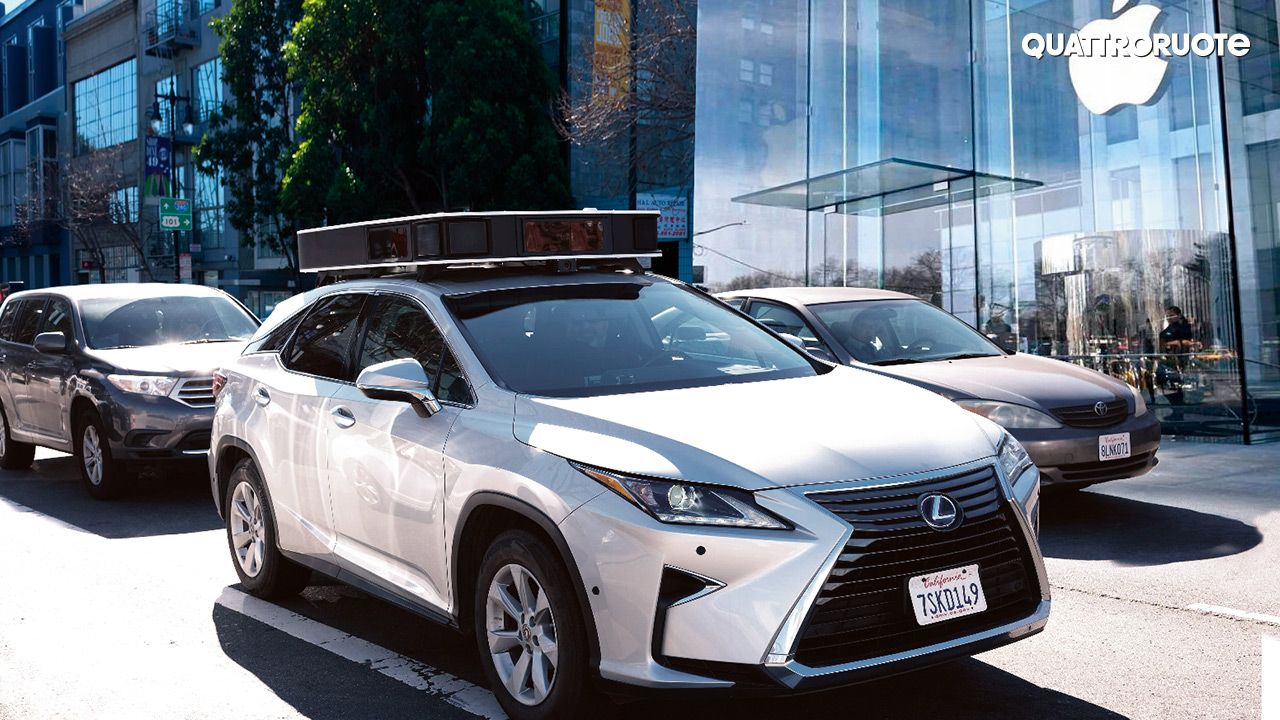
The Mattress Has Restarted (Tests at Full Speed)
Apple has come a long way since it started testing. And, in the meantime, its test vehicles have changed shape. Over time, Apple’s future self-driving vehicle (it could be launched with Level 4 autonomous driving) has evolved into something that has a mattress-like structure on the roof (hence the nickname, ‘mattress car’). Ironic nicknames aside, the numbers surrounding this car tell the story of rapid development – it went from 7,544 autonomous miles in 2019 to 18,805 miles last year. System deactivations have also gone down – one every 145 miles, down from an average of one every 118 the year before.
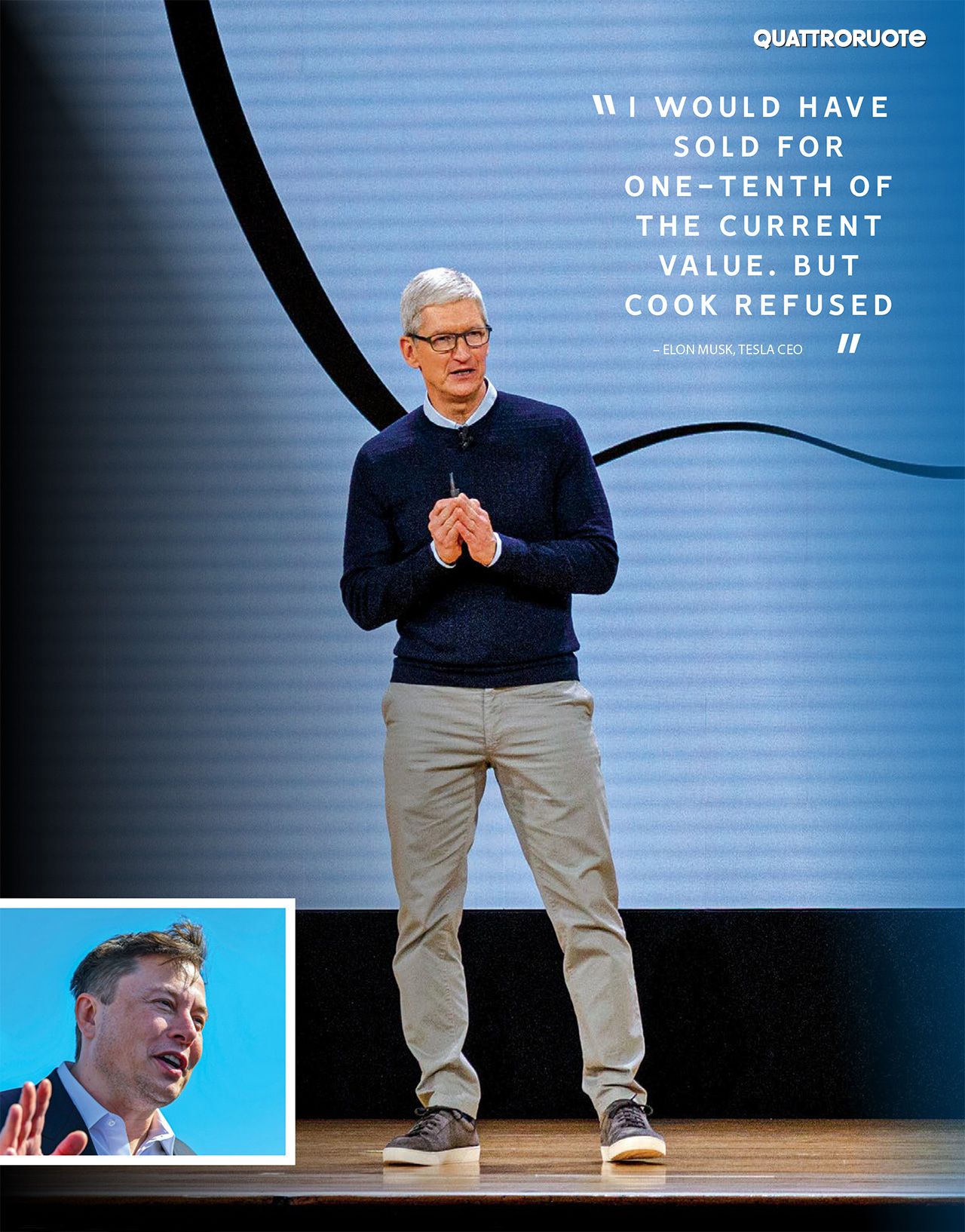
I Wanted To Sell Tesla (Musk on Tim Cook)
Today, four years later, it seems almost unbelievable. And yet it was revealed by Elon Musk himself, who confessed last January that in 2017 (when he was overwhelmed by the ‘production hell’ of the Model 3) he thought of selling Tesla: ‘During the darkest days of the Model 3 program, I sought Tim Cook to discuss the sale of Tesla to Apple for a tenth of its current value. He declined the invitation to the meeting.’ The statement was a hit on Twitter, but it was certainly not an isolated case. For instance, in 2015, when Apple began shopping for engineers, taking them away from him, Musk said: ‘It’s Tesla’s graveyard: if you can’t make it here, go work for them.’
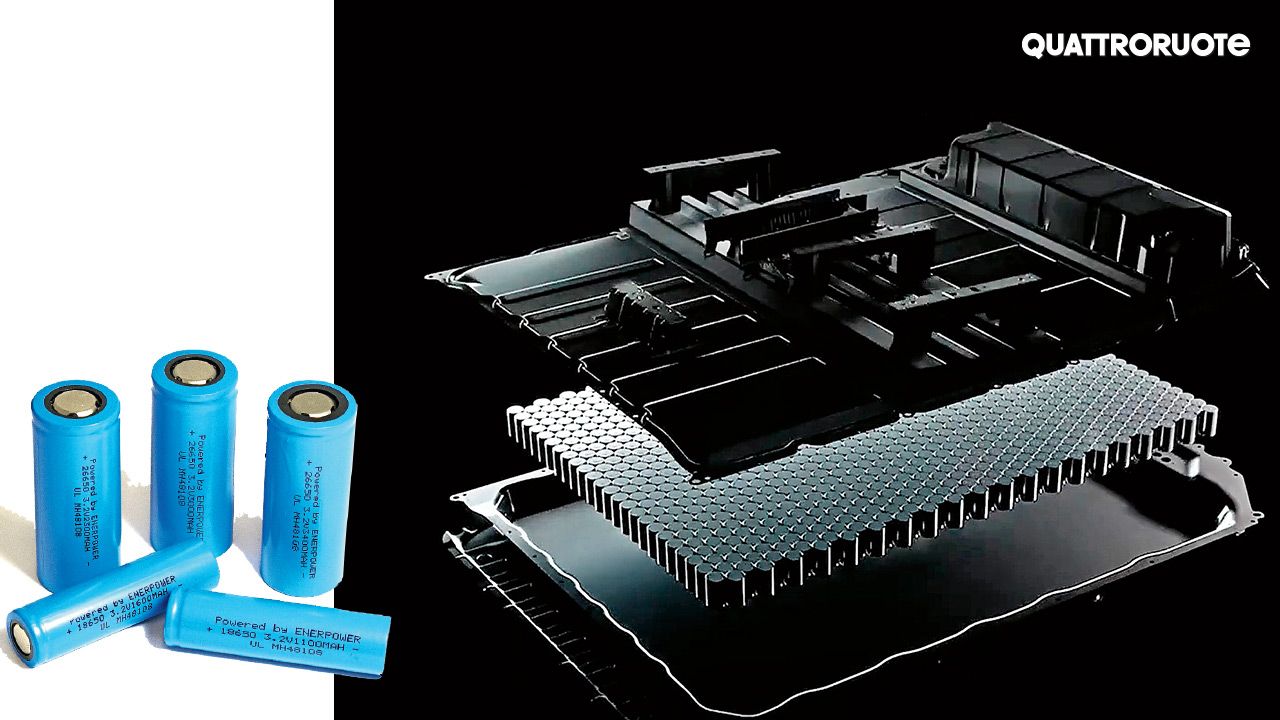
While having a lower energy density than lithium-ion cells, those with lithium-iron-phosphate cathodes have a much lower cost. Apple could focus on structural assembly, like what’s recently announced by Tesla (right).
Let’s Curb The Noise (Background Noise)
On December 21, 2020, Reuters publishes exclusive rumours, according to which Apple had decided to bring the scope of Project Titan back to its original, and more ambitious, form: the development of an electric self-driving car. This was the first update since the previous year, when the head of the program, Doug Field, fired 190 employees from the team.
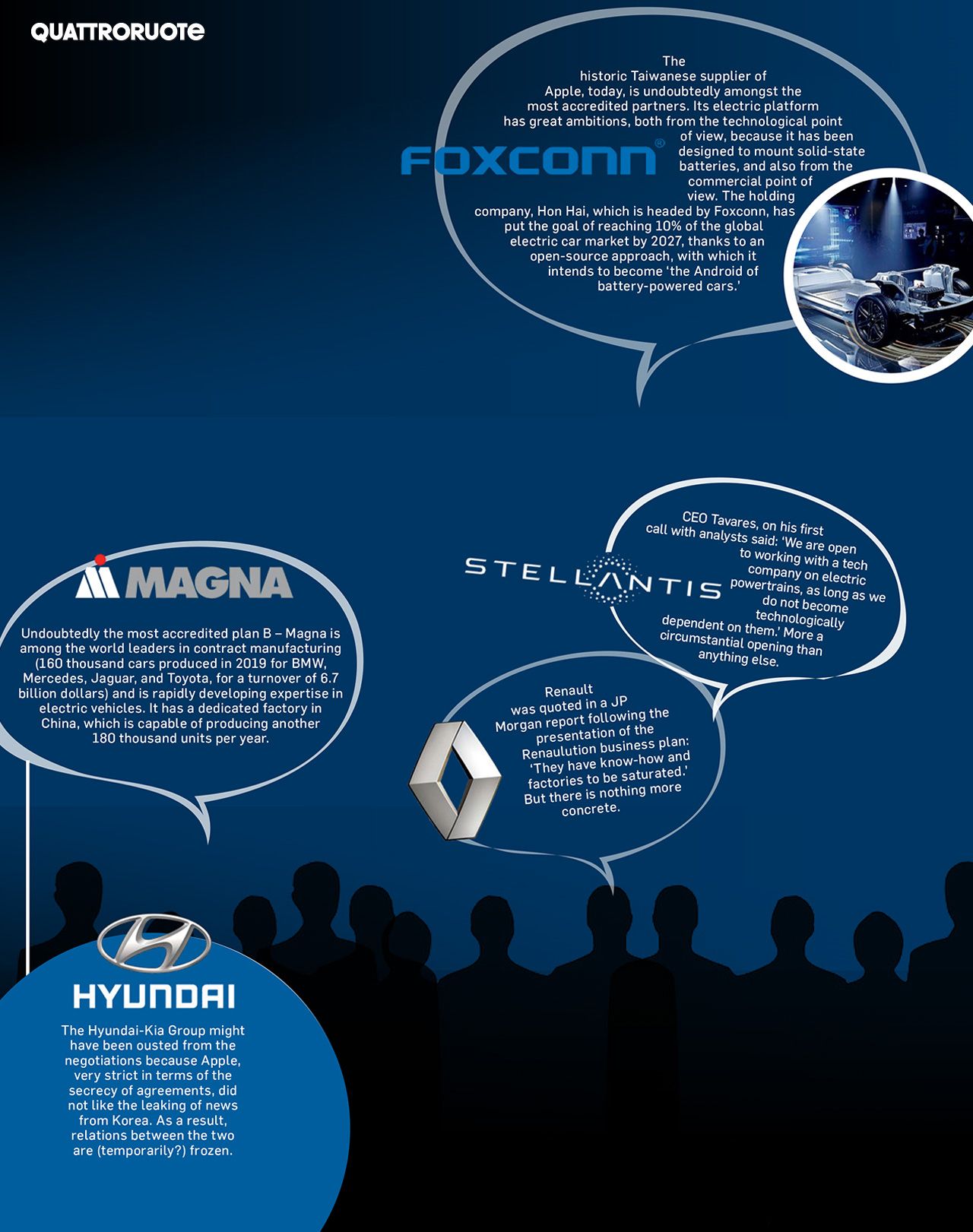
Inevitably, the news went around the world, producing a domino effect, which first made Hyundai and Kia stocks fly and then plummet thereafter, producing an infinite number of hypotheses on the possible Apple partner. Five main names have been brought up. But, of course, not all of them have a fighting chance.
© Riproduzione riservata
Read more:
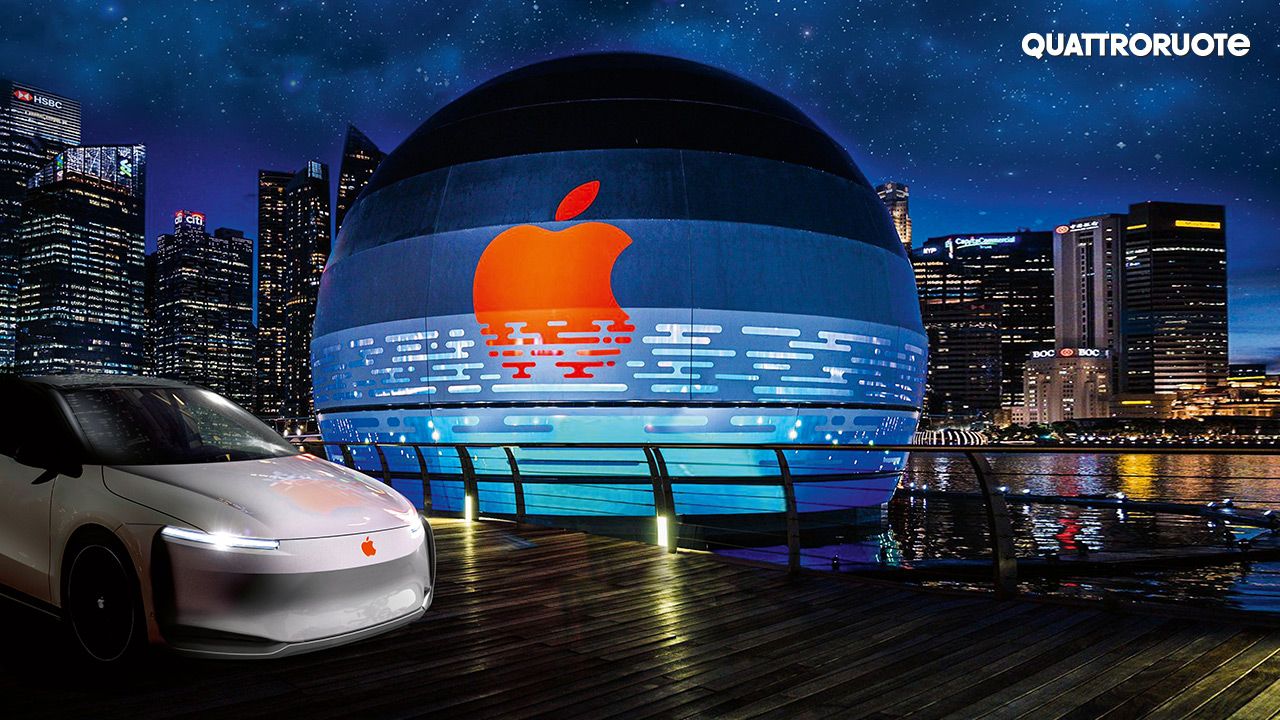
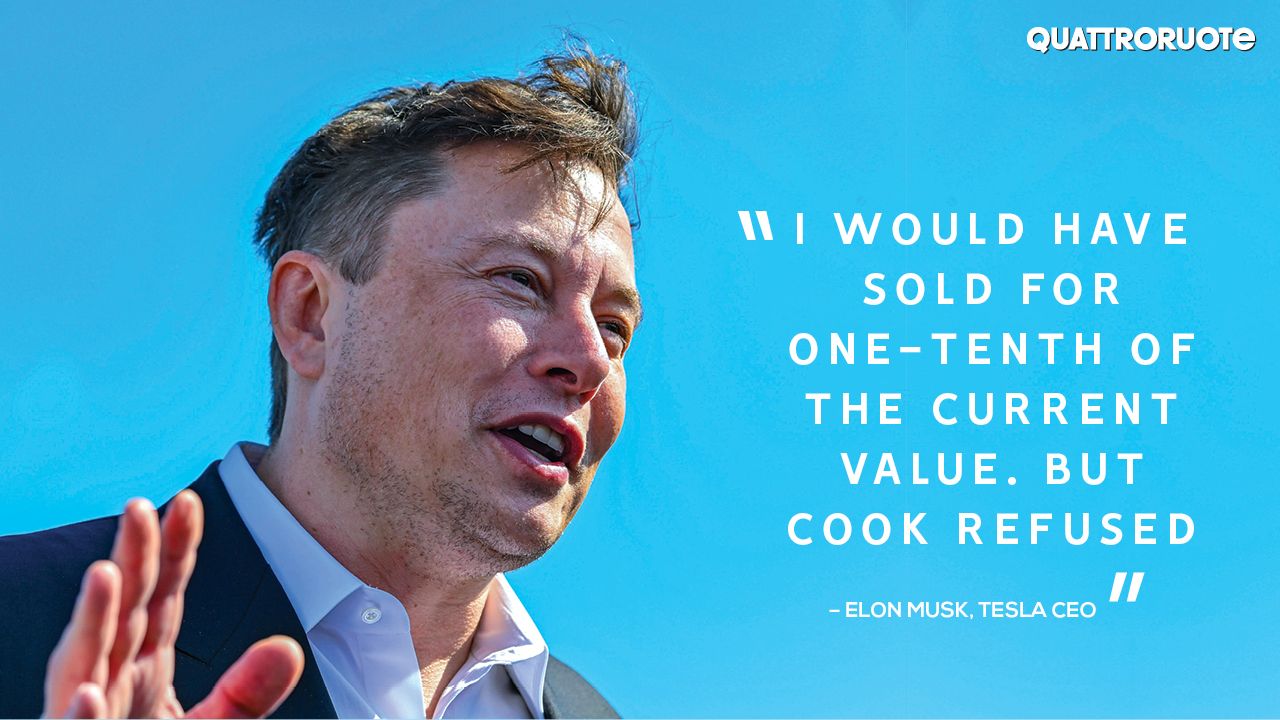
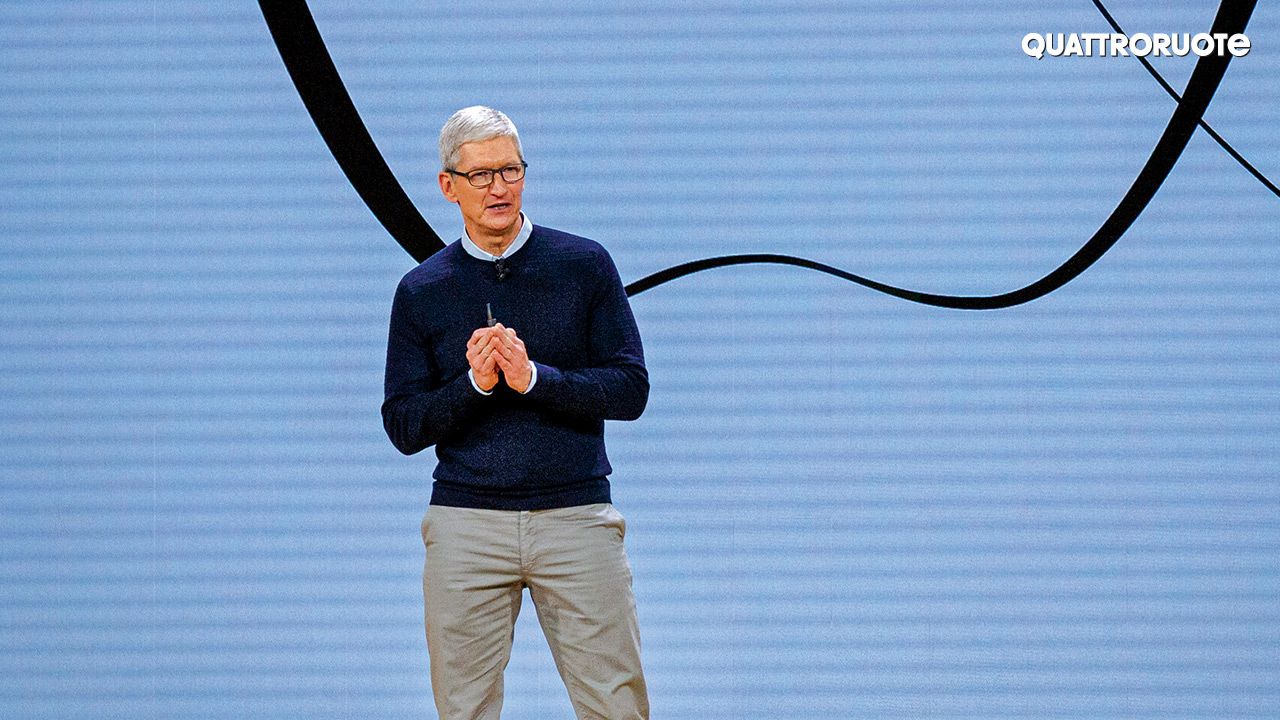


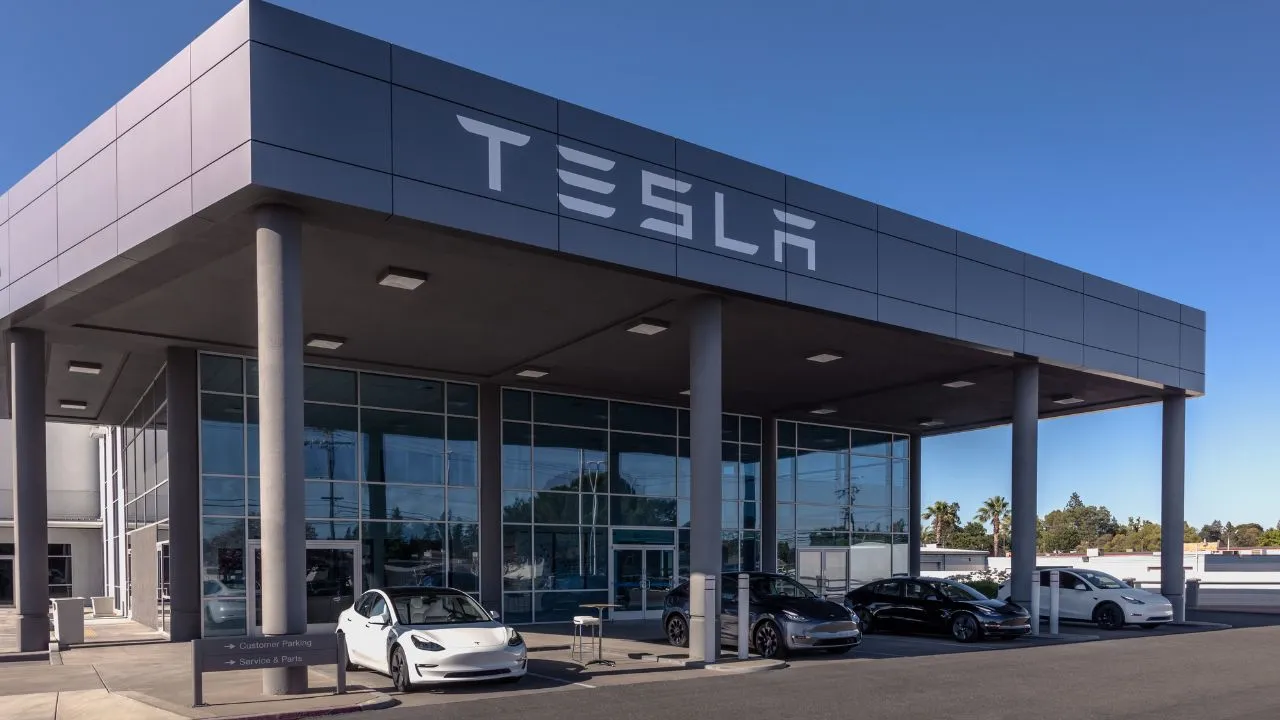

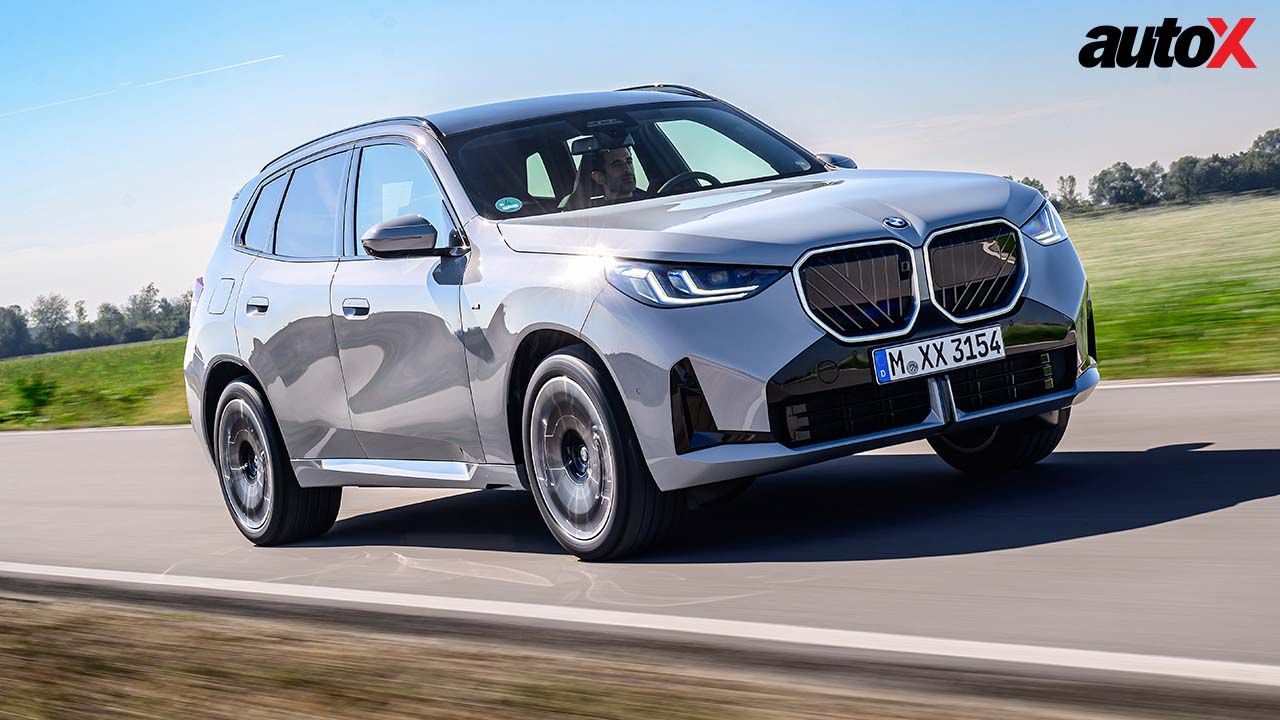
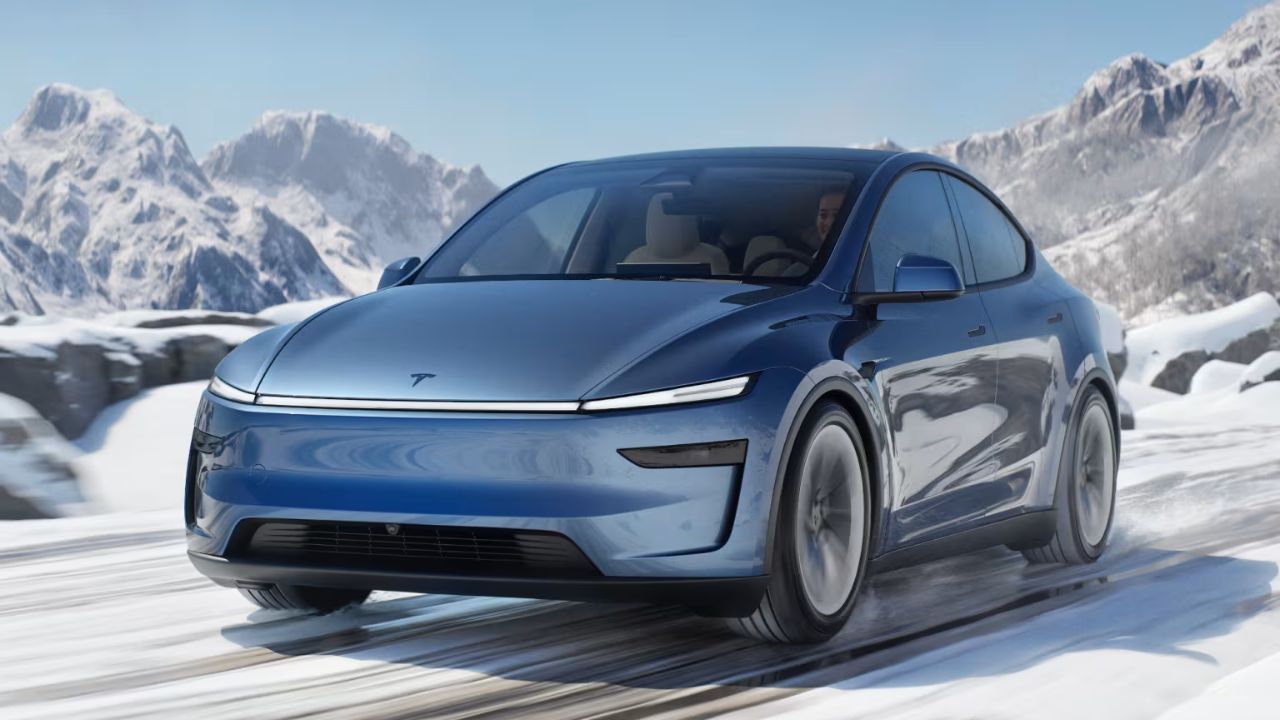
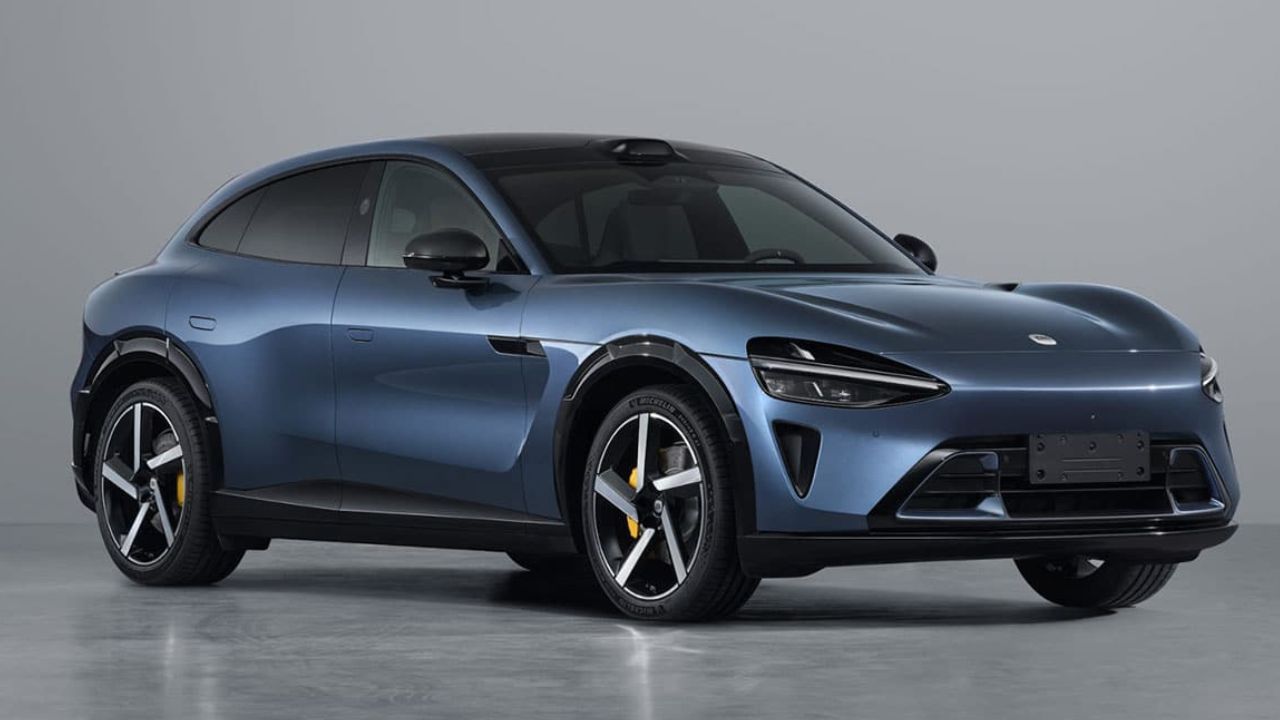
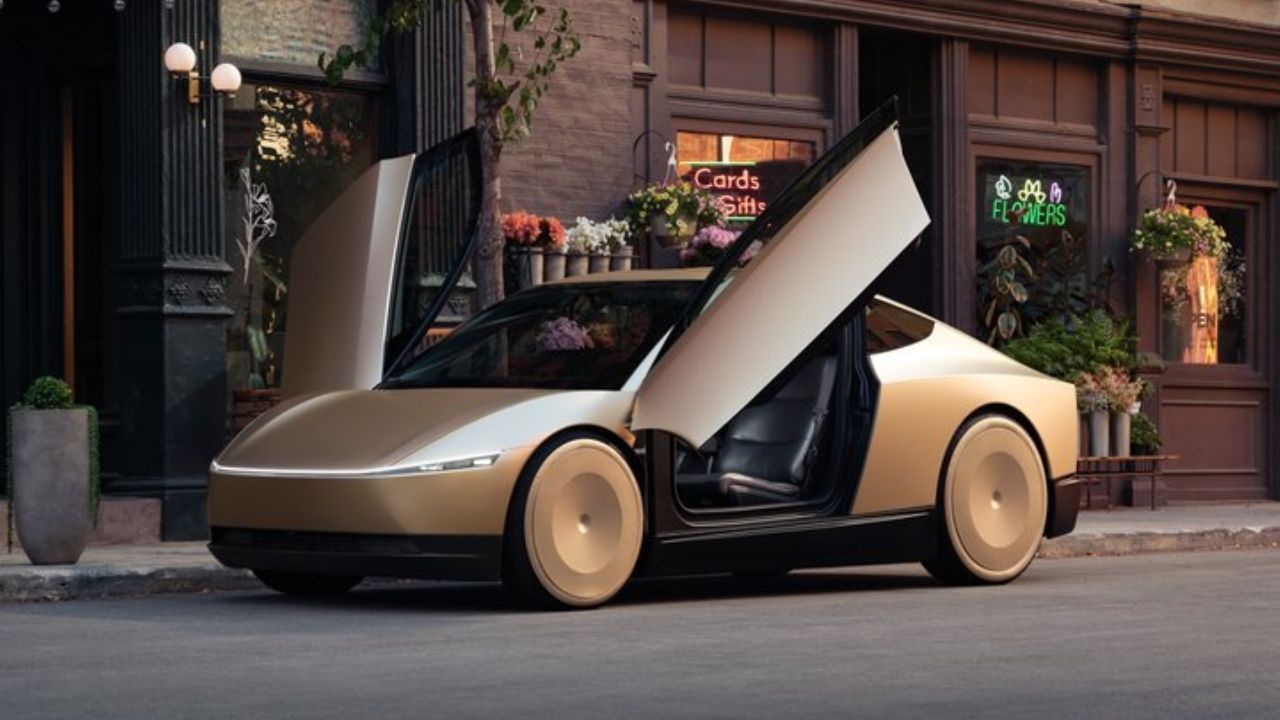






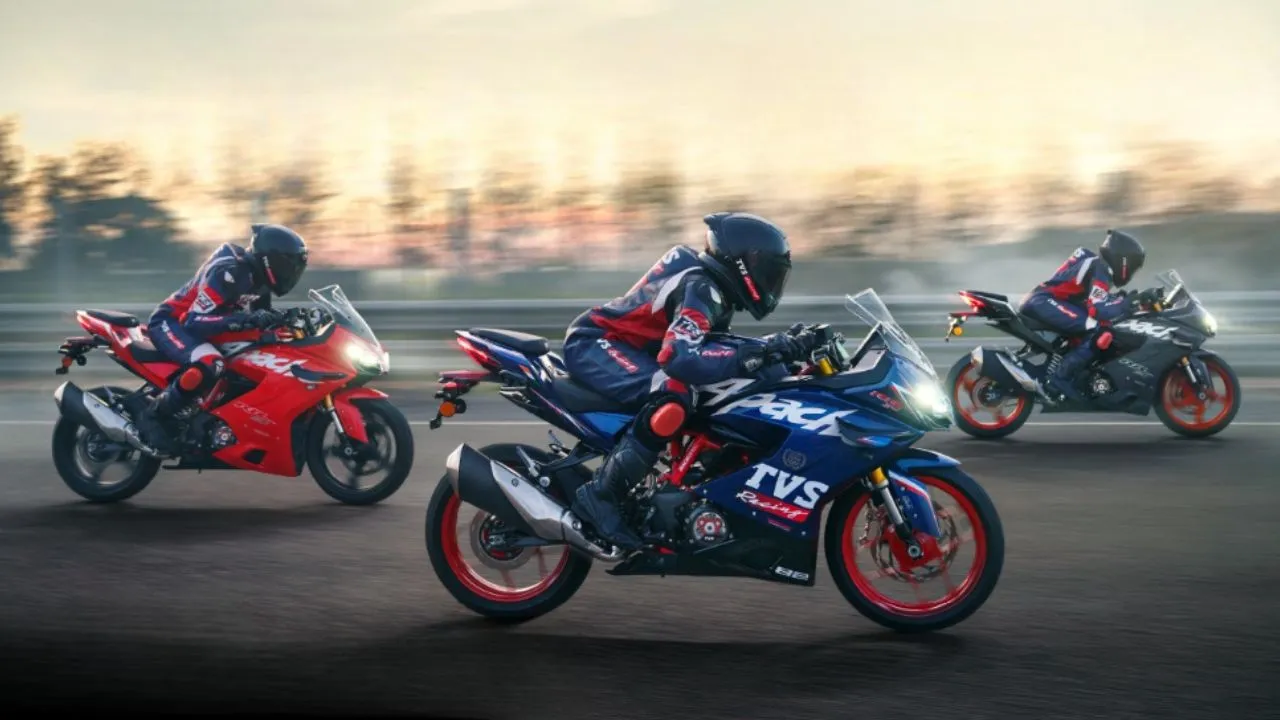
.webp)
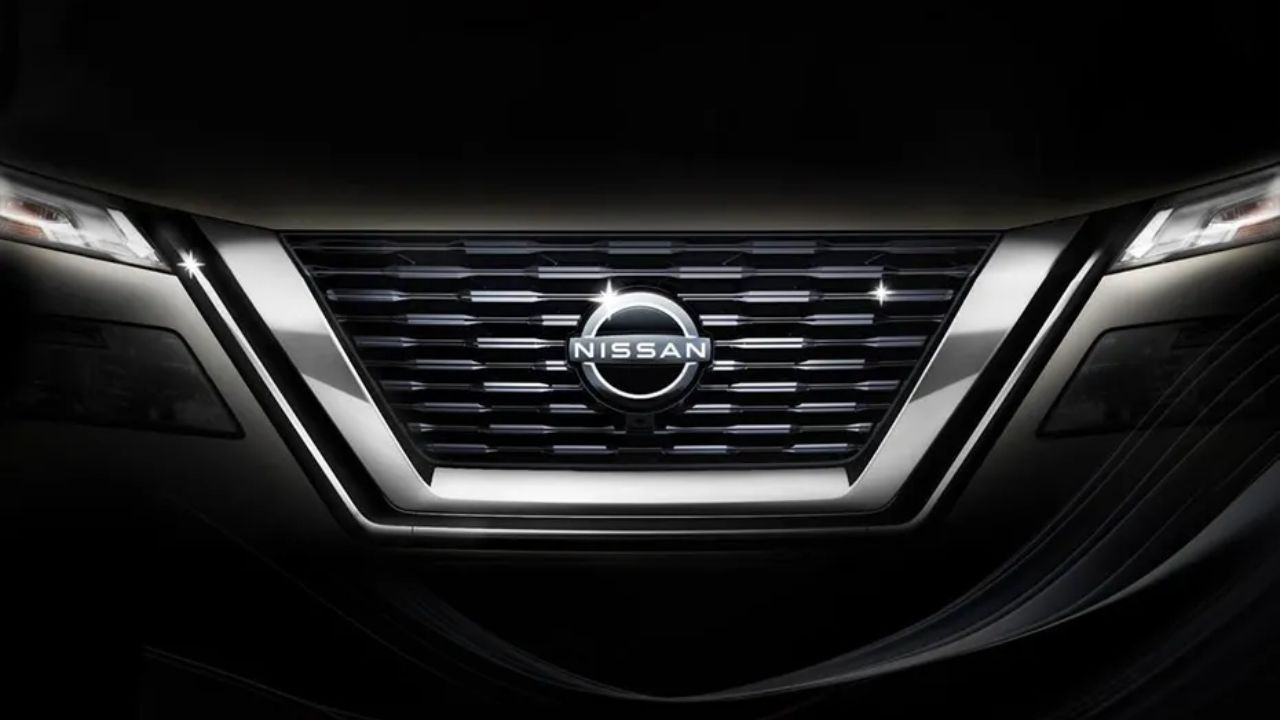
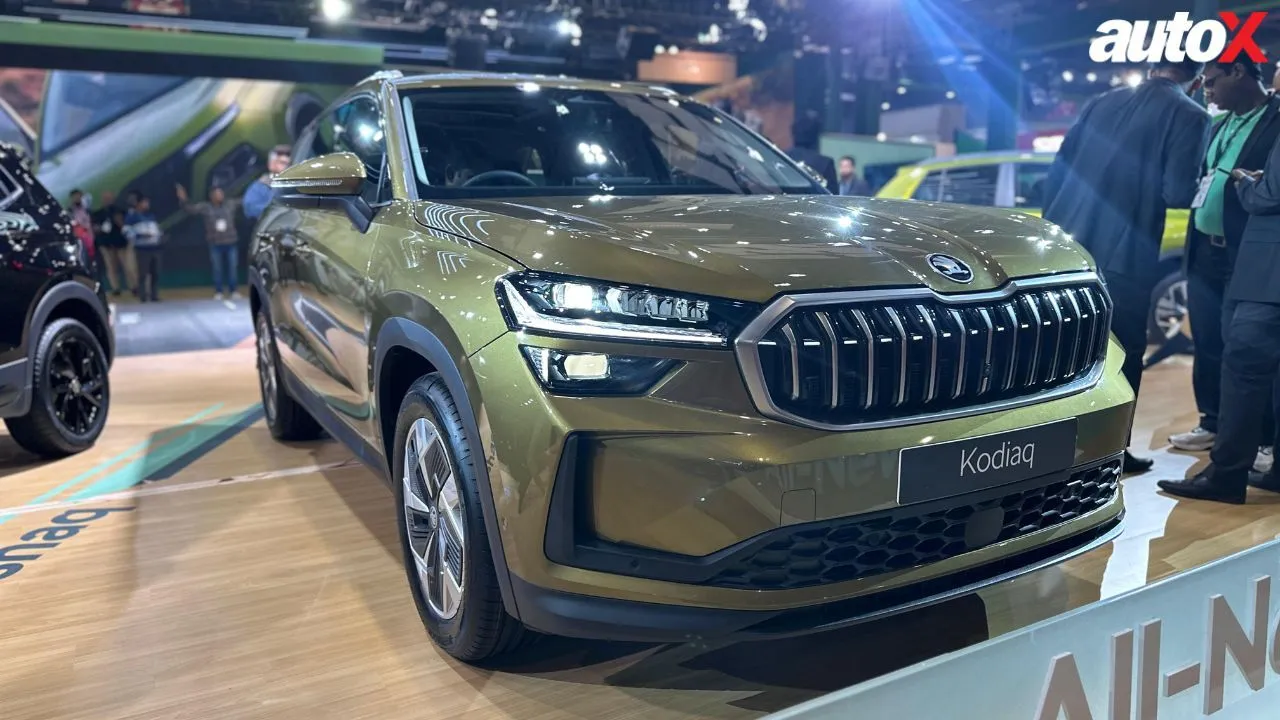





Write your Comment on